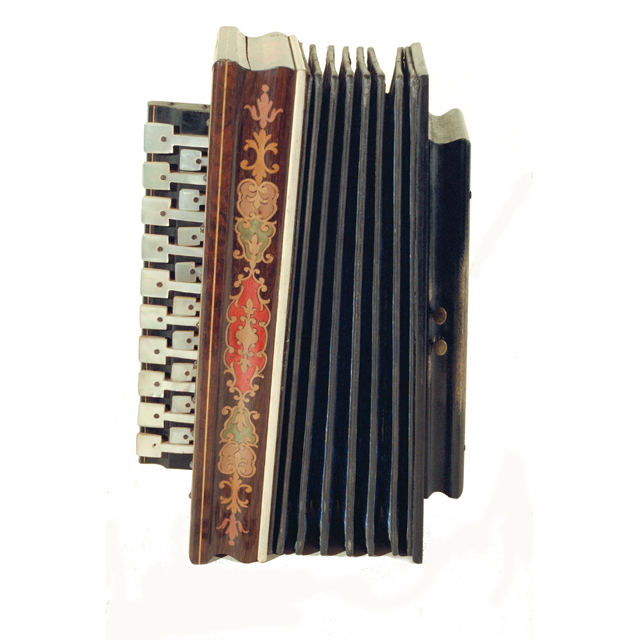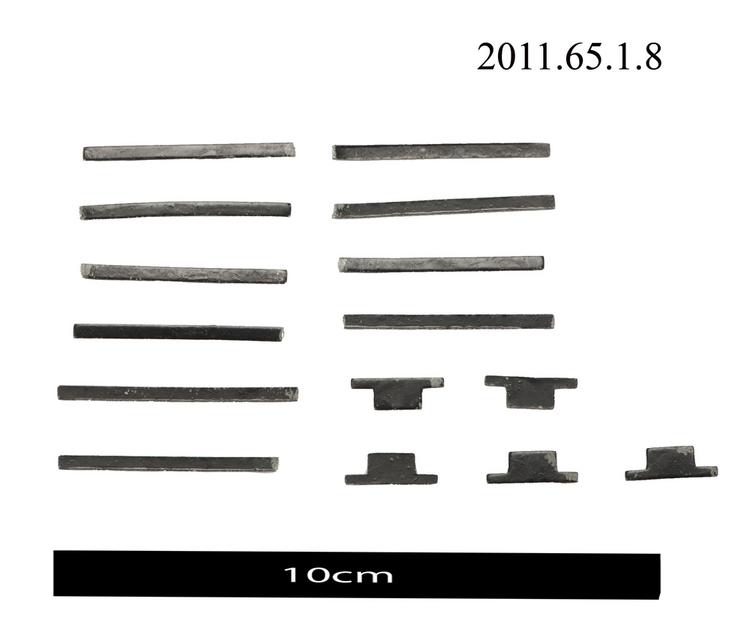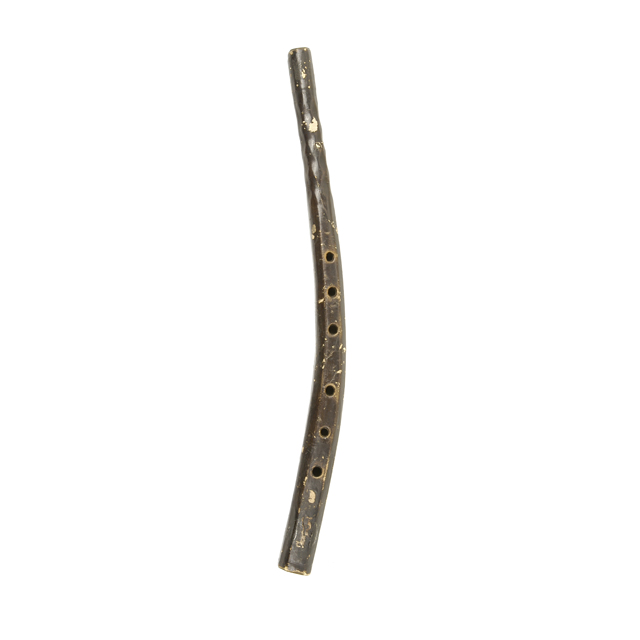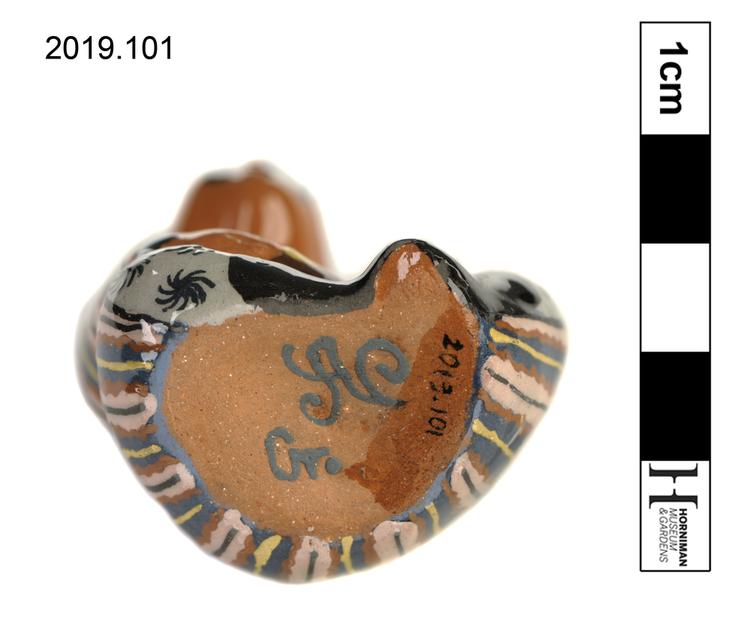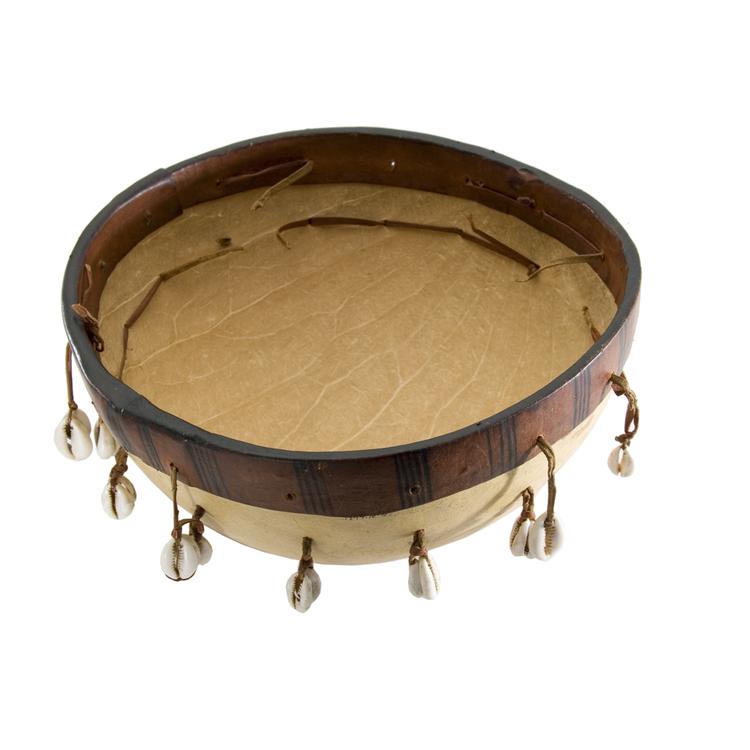
Gita Gourd Drum. Made from half a gourd with bound leather edging and cowrie shells.
The hard-shell gourd, being hollow, serves as a natural echo chamber. A dry unopened gourd, with its seeds still inside, will rattle when shaken. This instrument is made from half a gourd without seeds but by adding beads, seeds, shells or pebbles to the outside a variety of different tones can be made. The sound made depends on how the gourd is shaken. It can also be hit with a stick beater or the palm of the hand like a drum. Sometimes they are thrown into the air so that the shells clack against the sides when it is caught.
Gourd rattles are in widespread use in West Africa and played by musicians, usually male, as the percussion part of a small orchestra of local instruments. However, this gourd bowl rattle is usually played by women and accompanied by singing. Instruments which might be played with rattles in West Africa are the balafon (wooden xylophone), talking drum (double headed waisted drum), ngoni (five or seven stringed plucked lute), and kora (21 string plucked lute).
Different groups of people have different names for the instrument e.g. likembe, mbira, zeze, ekende, sanza , kankobele and many more. The mbira consists of a series of metal or split cane strips (tongues) fitted to a piece of wood or a box. On some the pitch of the tongue is determined by its length, which can be altered by sliding the tongue under the lateral bar.
The number of tongues varies between 5 and 30. Mbiras with metal tongues often have pieces of wire around the tongues to produce a buzz. Nowadays beer bottle tops are used for vibration. The mbira is often placed over a small calabash or inside a large calabash: this increases the volume.



